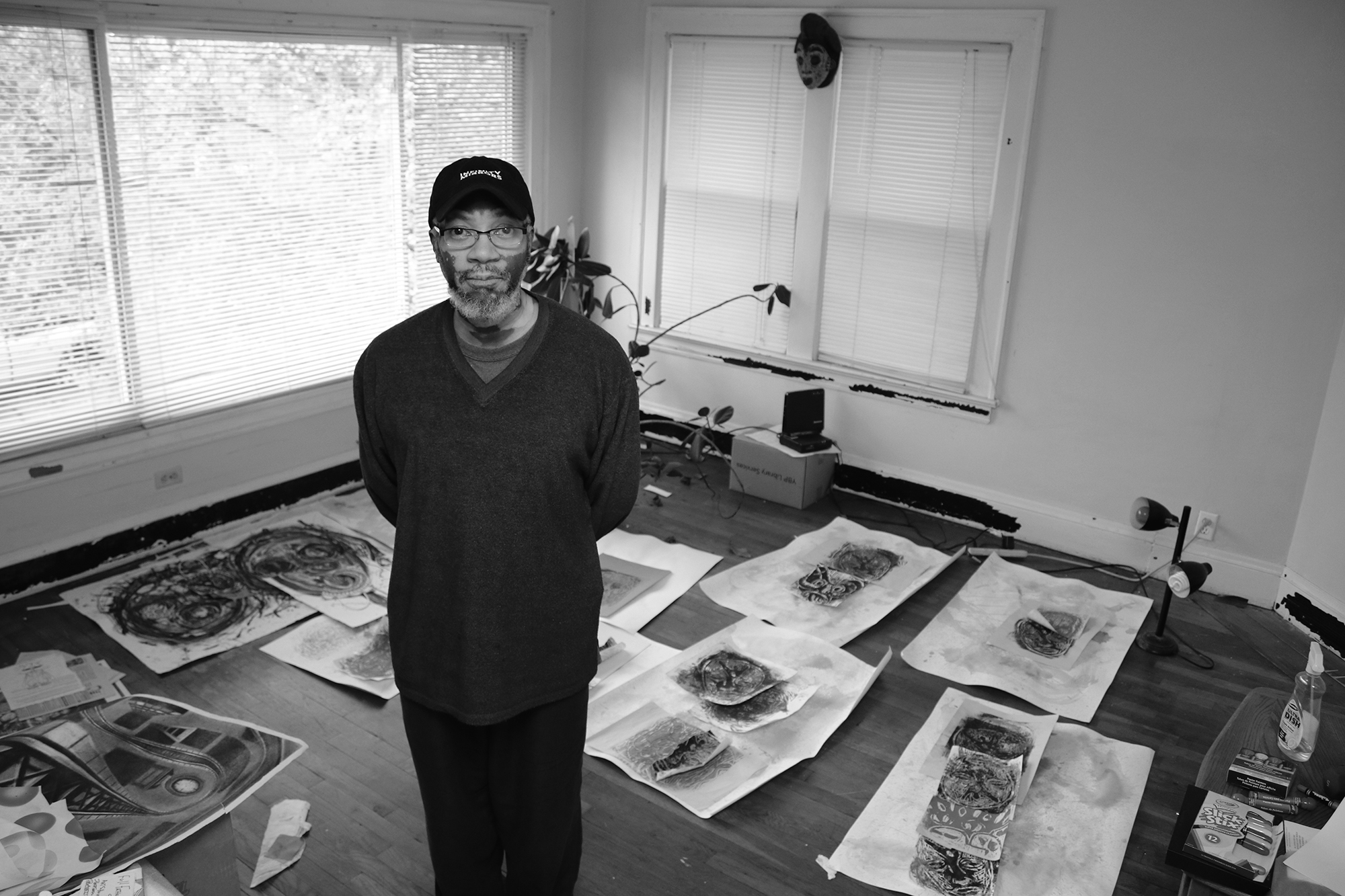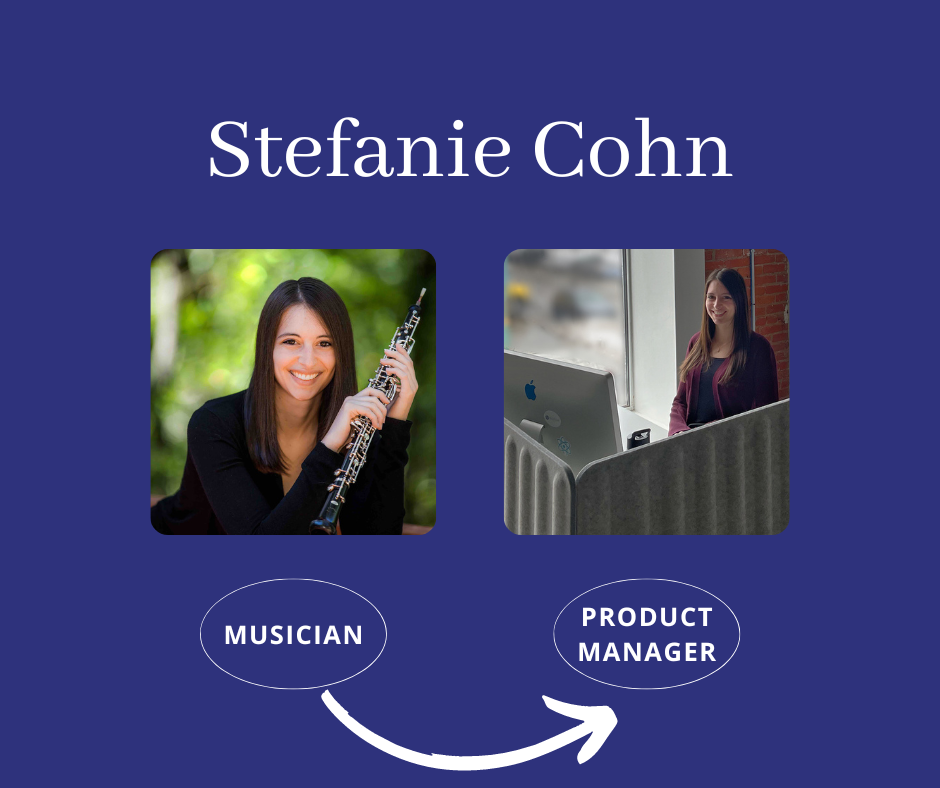Years 38 • Resides & Creates Richmond Heights • Learned BFA from Southern University A&M College in Baton Rouge, La.
Story and photography by Michael C. Butz
Antwoine Washington is an artistic dual threat. A skilled portraitist, his precise, life-like drawings pull people in with rich detail and invite them to relate to the subjects. His paintings, with topics ripped from the day’s headlines, are more visceral, and when he wants them to be, less refined, yet they convey equally compelling messages to viewers. It’s a powerful combination of talents.
“I always say it’s like, using basketball terms, you got a basketball player who can play street ball and he can play in the NBA,” he says. “When I really want to get personal with a piece, or intimate with it, I’ll draw it. It’ll take me longer, and I’m really just fleshing everything out. But when I paint, I use my painting as, like, a lot of emotion. I just want to get it out and I don’t want to waste a lot of time. I want people to see the emotion in it.”
In other words, his paintings earn him a game at Rucker Park in Harlem, his drawings – his primary passion – get him on the court at Rocket Mortgage FieldHouse.
Washington grew up in Pontiac, Mich., and from an early age, he drew Saturday morning cartoon characters for fun. Despite showing promise, he never thought about pursuing art professionally.
“How I grew up in a poor neighborhood, art wasn’t seen as a way out. You either rapped or you played basketball – those were the popular things,” he says. “I stuck with art. I always said I wanted to go to college and do the art thing in hopes it would eventually take me there.”
Even in college, however, Washington often had to be pushed by professors to enter his work in shows or pursue a career in art. Instead, he says he took on 9-to-5 jobs in order to “make some money,” the most recent of which was as a United States Postal Service mail carrier – a job that left him feeling unfulfilled.
To fill the creative hole, he’d come home from work to draw and paint, often posting the results on social media. The chorus of those encouraging him to focus solely on art – his wife, his friends, even his co-workers – grew louder, and he eventually decided to pursue art full time. The results? Fulfilling.

In the first Northeast Ohio show Washington’s work was included, the Artists Archives of the Western Reserve’s “New Now 2018,” he received the People’s Choice Award – Honorable Mention as voted on by viewers. Not long after, he was awarded an honorable mention award at Valley Art Center’s 47th Annual Juried Art Exhibit.
Amid those successes, Washington endured what could’ve been a serious setback. In November 2018, he suffered a stroke that left the entire right side of his body numb, including the hand he uses to draw and paint. He persevered and has since regained full use of his hand. He also gained a renewed sense of confidence.
“I feel like I gained an actual super power with that,” he says. “At first, I’d second guess myself, but I think maybe that part of my brain died and made me feel like, ‘Hey, screw it, I’m going to just go for it and try it and see what happens.’ It gave me … (a sense of) no fear. That super power of ‘no fear,’ I feel like that’s what happened after that.”
From the beginning, Washington’s art has been rooted in personal experience and representative of his surroundings. The 1992 assault on Malice Green by two white Detroit police officers that killed Green, who was black, left a mark.
“That always stuck with me,” he says. “I always said if I ever did art and was able to go into museums and do it professionally, that I’d paint about those types of things.”

Among the topics he explores in his art is the parallel he sees between antebellum slavery and the disproportionate imprisonment of African-Americans in the United States. It’s a complex subject, he admits, but one – like others – he hopes to make “more digestible” to a broader audience through his art. Washington says his goal isn’t necessarily to change minds, it’s to get people to listen.
“I’m just trying to be a voice for the voiceless,” he says. “Sometimes, people in the black community don’t have an opportunity to tell their stories. So, if I’m going to be in front of people, I feel like, ‘Hey, this is me, I’m letting you know what’s going on around me. These are the people talking through me, from my ancestors to now.’
“When viewing my art, just give it a chance. … Because I talk about some heavy stuff, some people probably are afraid to latch onto it, but don’t be afraid to look past the racial element and find something in it for yourself. A lot of times, like I say, I always speak from my perspective, but you can also get something from it because we all go through the same stuff. We’re all human, so we go through human stuff.” C
On View
- “The Art of Realism” will remain on view through Oct. 31 at Cleveland Hopkins International Airport (5300 Riverside Drive, Cleveland) as part of the airport’s Temporary Art Exhibition Program.
- “Fabulism” will be on view from May 9 to June 28 at YARDS Projects in Worthington Yards, 725 Johnson Court, Cleveland.
- “Rooms to Let CLE” will take place the weekend of May 18-19 at various locations throughout Cleveland’s Slavic Village neighborhood.
- “seenUNseen” will be on view from Sept. 20 to Nov. 16 at the Artists Archives of the Western Reserve, 1834 E. 123rd St., Cleveland.
“Antwoine Washington’s art succeeds in bridging cultural divides. Its subject matter is urgent, its delivery impassioned and its ability to spark important conversations significant. On several levels, it connects – and Northeast Ohio is fortunate to be home to an artist of his caliber and potential.”
Michael C. Butz, editor, Canvas











